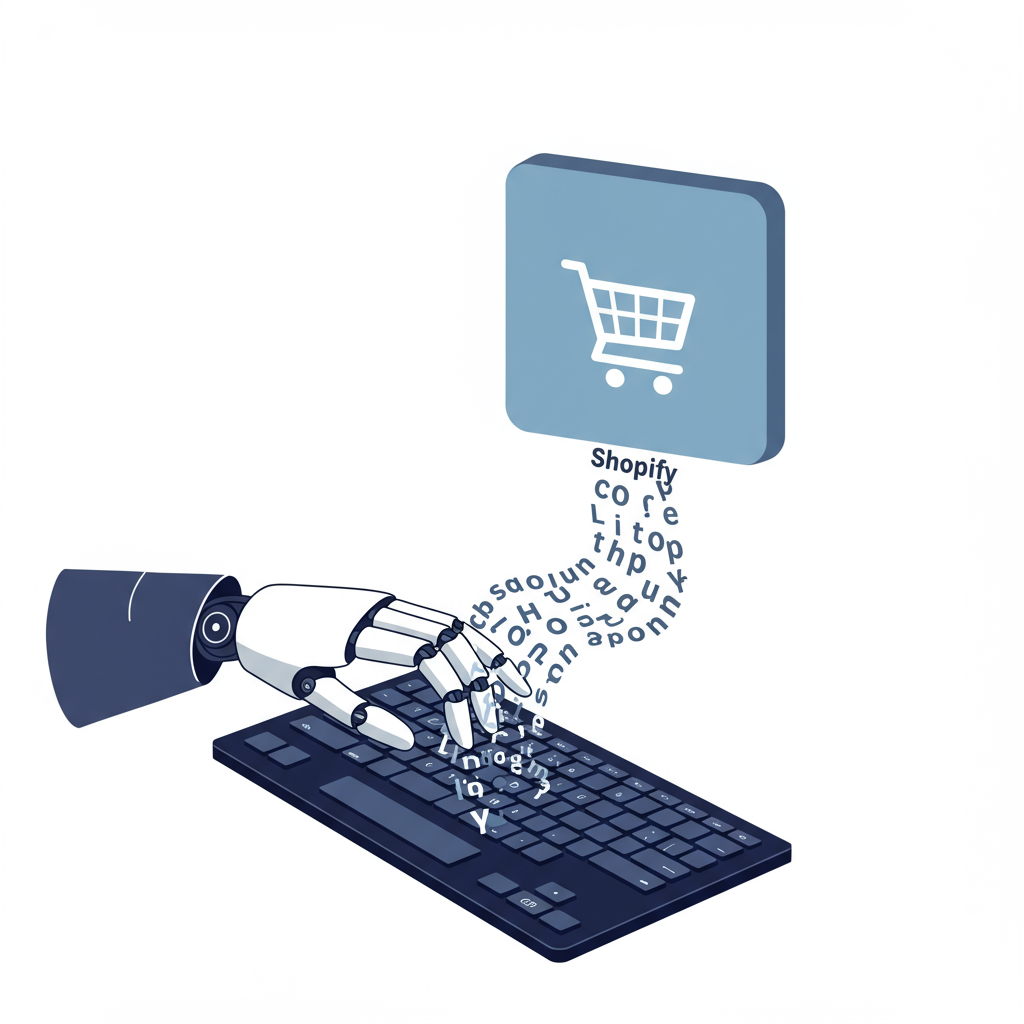Discover how artificial intelligence can revolutionize your product listings, save you time, and boost sales.
As a Shopify merchant, I know the grind. Every product needs a compelling story, a description that not only informs but also persuades. It’s a crucial element for converting browsers into buyers.
However, crafting unique, engaging, and SEO-friendly descriptions for dozens, hundreds, or even thousands of products can be an incredibly time-consuming and mentally draining task. I’ve been there, staring at a blank screen, trying to find new ways to describe a simple t-shirt.
This is where artificial intelligence steps in as a game-changer. I’ve personally explored and implemented AI tools to streamline this very process, and I’m excited to share my insights with you.
AI isn’t just a buzzword; it’s a powerful assistant that can revolutionize how you manage your product listings, saving you countless hours and potentially boosting your sales.
Think about the challenges we face. We need to highlight features, explain benefits, incorporate keywords, maintain a consistent brand voice, and do it all while sounding fresh and exciting.
Writer’s block is a real phenomenon, especially when you’re trying to differentiate similar products. The quality of descriptions can also vary wildly if multiple people are contributing, or if you’re simply exhausted.
Poorly written or generic descriptions often lead to higher bounce rates, lower conversion rates, and a struggle to rank well in search engine results. This directly impacts your bottom line.
AI-powered content generation tools are designed to overcome these hurdles. They leverage natural language processing (NLP) and machine learning to understand your input and generate human-like text.
These tools can take a few bullet points about your product and transform them into a full, engaging narrative in seconds. It’s like having a dedicated copywriter working for you 24/7.
At its core, you provide the AI with information about your product. This could be its name, key features, target audience, tone of voice, and any specific keywords you want to include.
The AI then processes this data, drawing upon vast amounts of text it has been trained on, to generate unique and relevant descriptions. It can even suggest different angles or benefits you might not have considered.
One of the most immediate benefits I’ve experienced is the incredible time-saving aspect. What used to take me hours for a batch of products can now be done in minutes.
Beyond speed, AI significantly enhances creativity. When I’m stuck, the AI provides fresh perspectives and alternative phrasing, helping me overcome writer’s block and inject new life into my descriptions.
SEO optimization is another huge win. Many AI tools can be prompted to include specific keywords naturally, helping your products rank higher in search results and attract more organic traffic.
Maintaining a consistent brand voice across all your product listings becomes effortless. You can train or prompt the AI to adhere to a specific tone, whether it’s playful, professional, or luxurious.
For merchants with international customers, AI offers multilingual support, allowing you to generate descriptions in various languages quickly and accurately, expanding your market reach.
Some advanced AI platforms even offer A/B testing insights, helping you understand which types of descriptions resonate best with your audience, leading to continuous improvement.
The scalability is unmatched. Whether you’re launching five new products or five hundred, AI can handle the workload, ensuring your store is always up-to-date with high-quality content.
First, choose the right AI tool for your needs. There are many options available, from general-purpose AI writing assistants to specialized e-commerce content generators.
Next, prepare your input data meticulously. The quality of the AI’s output heavily depends on the quality of your input. Be clear, concise, and provide as much detail as possible.
Don’t just copy and paste the first output. Treat the AI as a first draft generator. Always review, refine, and add your human touch to ensure the description perfectly aligns with your brand and product.
Integrating these descriptions into your Shopify store is usually a simple copy-paste job. Some tools might offer direct integrations, but even manual transfer is incredibly fast compared to writing from scratch.
Always provide clear and specific prompts. The more context you give the AI, the better its output will be. Think about your target audience and their pain points.
Focus on benefits, not just features. While features are important, customers buy solutions to their problems. Prompt the AI to highlight how your product improves their lives.
Incorporate strong calls to action. Even the best description needs to tell the customer what to do next. ‘Add to cart,’ ‘Shop now,’ or ‘Learn more’ are essential.
Remember to naturally weave in your target keywords. Avoid keyword stuffing, as this can harm your SEO. AI can help you integrate them smoothly into the text.
While AI is powerful, it’s not infallible. Sometimes it might ‘hallucinate’ facts or produce generic content if not given enough specific guidance.
It requires human oversight. AI is a tool to assist you, not replace your critical thinking and brand voice. Always proofread for accuracy, tone, and grammar.
Data privacy is another consideration. Ensure you understand how the AI tool handles your product data, especially if it’s proprietary or sensitive.
I believe AI will continue to evolve, offering even more personalized and dynamic product descriptions, adapting to individual customer preferences in real-time.
In conclusion, embracing AI for your Shopify product descriptions is no longer a luxury; it’s becoming a necessity for staying competitive and efficient. It frees up your time to focus on other critical aspects of your business.
I encourage you to experiment with these tools and see the transformative impact they can have on your store. The future of e-commerce content is here, and it’s powered by AI.
What do you think about this article? Have you tried using AI for your product descriptions, or are you considering it? I’d love to hear your thoughts and experiences.






